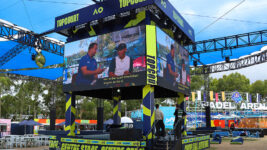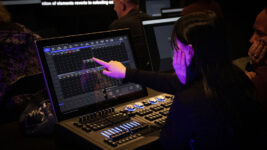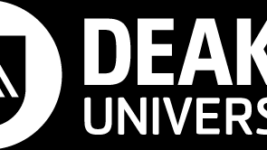News
25 Feb 2016
Review: Soundcraft Vi7000
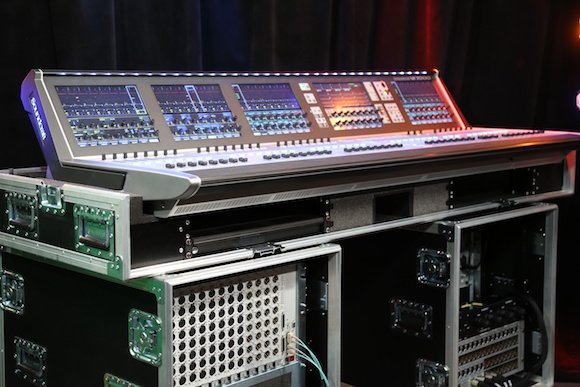
Subscribe to CX E-News
Vying for attention?

I’m pretty glad we installed a ramp in the loading dockhere at CX HQ, because it made getting the Vi7000 into our building a lot easier than it otherwise would be. Further helping the processalong was the modular nature of the Vi7000 – ours arrived in three distinct pieces.
We reviewed the Vi3000 some months ago now and pretty well loved it to pieces. The interface, the sound, the look and the general usability of the console impressed us no end. The Vi7000 has all of the same goodness, but in a somewhat different package.
Broadly speaking the Vi7000 supports mixing up to 128 inputs into a total of 32 output busses, each of which can be mono or stereo. Eight internal Lexicon effects are available, every output bus has a BSS graphic, and you can swap the normal dynamics processing to a BSS DPR901ii dynamic EQ on up to 16 channels. Naturally the IO options are comprehensive and include Dante, Rocknet, Ethersound, Cobranet, MADI, and of course good old analogue. With extra DSP cards and a reduced channel count, 96kHz operation is optional.
The Vi7000 is comprised of several elements: a stagebox plays host to the bulk of the channel and bus IO connections. The stagebox connects to the Local Rack, which contains all the DSP and processing hardware. The stagebox and Local Rack ship in well-constructed identical rack cases with lids and wheels, ready to tour. The Local Rack is a card-frame type situation, with local IO connectivity via an active external breakout box. Where fiber connectivity is used to the stage box, an additional rack panel provides dual expanded beam fiber connectivity so you’re not relying on small fragile connectors.

In its standard form, the Local Rack includes two MADI interface cards, either both fiber, or one fiber and one cat5. Additional cards such as GPIO, FX, Bridge, Clocks and HD cards are included by default. Five DSP cards ship in the standard Rack, however additional DSP and MADI cards (as well as a Dante card) may be added to suit specific applications.
As you’d rightfully expect on a flagship console there’s redundancy everywhere. Should the worst happen and you lose all power, the console will boot up exactly where you left it. Another nice feature is the inclusion of dual power supplies in the stagebox, Local Rack, and surface.
The surface itself links to the Local Rack via a one etherCON, and a couple of XLRs for stereo solo bus and talkback audio signals. The Vi7000 surface has 44 motorised faders spread across five bays. Of these, 32 faders (four bays) are generally devoted to input level control while the remaining bay handles duties like bus levels, and VCA management. The screen above this “master” bay also handles metering, console setup, scene management and other non-channel related functions. The channel fader layers are all customizable and VCAs may be included on the channel banks if required.
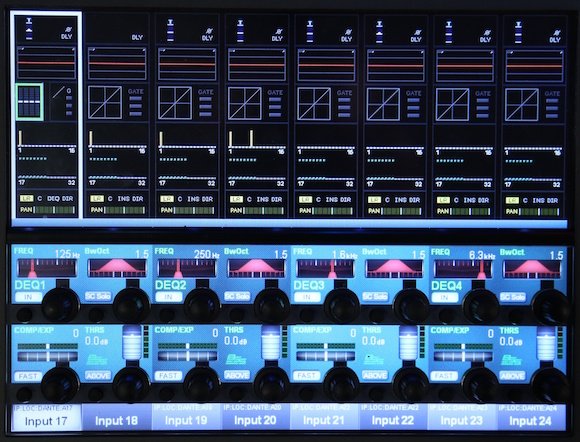

The Vistonics interface is still as good as ever, intuitive and snappy to navigate. The Vi7000 adds a further level of customization with user definable encoder functions for channel strips. Vistonics Mic Monitoring allows the status of Dante connected radio mics to be shown directly on the console screen – that’s way cool! Signal routing capacity has been expanded with additional internal tielines now available, so now you can patch anything to anywhere more times. Patching is more complex only in the sense that more sources and destinations are available.
Latency from stagebox mic input to local line out is claimed as below 2mS at 48kHz, and while I didn’t measure this it certainly sounds believable. The modular nature of the console and Local Rack mean that while it’s less “plug and play” than a Vi3000, the Vi7000 is certainly more flexible and allows for many more configuration options. Need more remote IO? Add a MADI card and another stagebox. You can choose from optical or cat5 connection. External operation of the console is also possible via either iPad or the Virtual Vi software, which can also be used to prep console files.
It’s hard to categorise the Vi7000. In some ways it’s like a Vi3000 which takes itself more seriously. Less of a drop-in analogue replacement, and more of a purposeful choice made at the outset of a production. As much as the 3k is loads of fun, I feel almost like the Vi7000 expects more from me as an operator. It’s very serious hardware, and I reckon subconsciously it encourages you to treat it accordingly. Maybe that’s just because I know how much it’s worth? Whatever. It’s a great console.
- Brand: Soundcraft
- Model: Vi7000
- RRP: Package including Vi7000 surface with case, 48kHz (5xDSP card) local rack, and 64×32 stagebox with Cat5 MADI IO – AUD$148,920 inc GST.
- Product Info: www.soundcraft.com
- Distributor: www.jands.com.au
First published in CX Magazine, February 2016
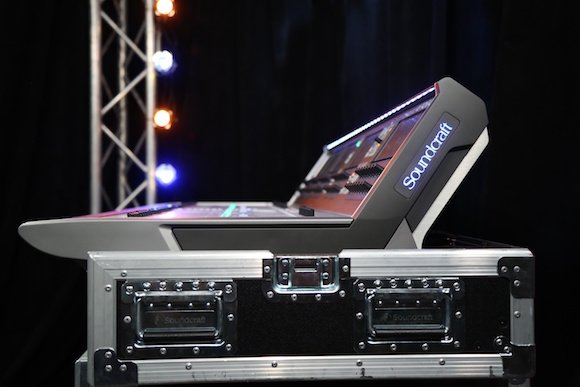
Subscribe
Published monthly since 1991, our famous AV industry magazine is free for download or pay for print. Subscribers also receive CX News, our free weekly email with the latest industry news and jobs.


